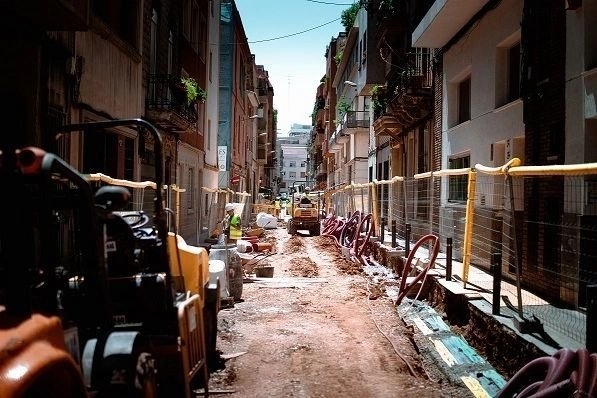EDD for Corporate Transaction, Merger & Acquisition

You would not buy a used car without at least looking under the hood, shaking the tires, and taking it for a ride, right? So, would you buy a company or undertake a merger involving real estate assets without checking those out too? Surely not.
But sadly, many do just that. And the courts are littered with cases where a party (plaintiff or defendant) claims they are not to be held responsible for legacy site contamination issues which occurred before they acquired the property. Not so fast, and frankly, buyer beware.
Legal and financial due diligence have been part and parcel to corporate transactions and merger/acquisition activity from the very beginning. You are buying or acquiring an operation, so how it looks financially and legally are germane to your decision to move ahead. But what about physical assets?
Real estate and physical assets may justify the same level of scrutiny, however a “first look” is typically not an expensive undertaking. Analogous to a health screening or checkup, a Phase I environmental assessment is generally non-intrusive, quick, and relatively economical when viewed in the context of the subject transaction, and certainly in the context of a potential liability.
Let us dive into the details a bit more…
Environmental Site Assessments, or ESAs, were first standardized in the United States by the American Society for Testing and Materials (ASTM), and are broken down into two primary efforts – a Phase I ESA and the Phase II ESA.
The Phase I ESA
The Phase I ESA, or ‘Phase I’ study, involves a desktop (research) study effort, a questionnaire for the current property operator, and a site reconnaissance (site walk) conducted by an experienced environmental engineer or environmental scientist to take the information gained in the background research and questionnaire and review the site with that information in hand. This site reconnaissance typically does not include collection of soil, water or air samples, but does include photo and written documentation of observations of conditions that might indicate environmental impacts or risks as described below.
The Phase I can be completed in few as several weeks to as much as a month or more and for simple sites typically costs in the range of USD $3,000 - $5,000. Things considered in executing a Phase I include:
- The type and nature of business operations of current and past occupants, and to the extent possible, those on abutting sites;
- The overall site geometry, topography and hydrogeology;
- Specifics of chemical use, storage and transfer, and;
- Onsite wastewater treatment systems and potential air and water discharges from the site in the context of government environmental regulations and guidelines.
Following the desktop study and site reconnaissance phases, the Phase I wraps up with the development of a report for the client that summarizes the work performed and the findings gained from the study, the identification of ‘Recognized Environmental Concerns’, or RECs at the site, and recommendations for additional site characterization efforts, where appropriate, if observed site conditions, research and/or other factors indicate there is or is likely to be environmental contamination at the site. Additional site characterization efforts are performed as part of Phase II ESA, which is significantly more intrusive and expensive as it typically includes subsurface explorations, sample collection and testing, and technical analysis to develop a conceptual site model.
The Phase I is intended to provide a quick ‘thumbs up’ that things are ok at the property and that there are no red flags that would indicate a party should not move ahead without further investigation. On the contrary, if observed site conditions or site history indicate a prudent party would pause and take the time to understand potential environmental liabilities associated with the site, the Phase I is intended to provide that indication.
The Bottom Line
Unfortunately, history shows that performing environmental due diligence is not a standard practice outside of the US and western Europe. The courts and literature are flush with examples where a Phase I ESA was not done or not done properly, with significant consequences to the buyer. The timing of the Phase I is critical: it provides information on potential environmental liabilities at the right time, when go/ no-go decisions, leverage, or the ability to monetize those issues as part of the transaction is at hand.
The Phase II ESA
Based on the outcome of the Phase I, a Phase II study may be conducted to further explore and quantify environmental conditions at the subject site.
This will typically involve performance of subsurface explorations at the site (such as soil borings or excavated test pits) for sample collection so that water, soil, or air samples can be subjected to standardized laboratory chemical analysis. The laboratory analysis seeks to identify and quantify concentrations of contaminants at the site for comparison with regulatory limits and guidelines, and development of a ‘Conceptual Site Model’ for the site.
The conceptual site model is a standardized site modeling technique used to evaluate and communicate the risk of contaminant impact to human and environmental receptors by identifying a contaminant source, contaminant pathway, and human or environmental receptors of contamination at the site.
The Phase II is a significant effort that can take months to plan, execute the data collection, perform engineering analysis and summarize in detailed reporting. The reports from such efforts can be extremely important to the parties in the transaction and should always be subject senior internal or peer review prior to delivery, since they are frequently subject to legal and counter-party technical review. The cost of these efforts, primarily a function of field exploration and laboratory analytical programs, vary as a function of the site size and complexity, and can range from a few tens of thousands of dollars to orders of magnitude more.
by Philip Reidy (July 2020)

